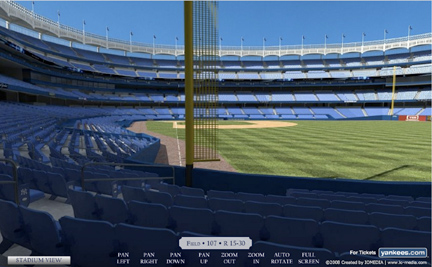Given three articles and a chat since my last post, I’ll be clearing the decks with links to each individual piece rather than one monster post. First up is the AL West installment of the Outside Help series. Here’s the intro and the part about the Angels:
The AL West was the American League’s weakest division last year, finishing with a .487 winning percentage and a .475 Hit List Factor. The Angels won an MLB-best 100 games, but they were the only team in the division to finish above .500, and they reached the century mark only by setting a record by outdoing their third-order Pythagenpat projection by a whopping 16 wins. All told, the division’s HLF was just a single point ahead of the basement-dwelling NL West’s mark, and the 12th-lowest of the Wild Card Era.
As with much of baseball beyond the East Coast, it’s been a relatively quiet offseason in the AL West when it comes to flashing the cash around. The four teams have spent an average of $13.7 million on free-agent contracts, a bit ahead of the AL Central’s mark ($12.4 million), and with the dollar amount of Oakland’s Nomar Garciaparra deal still pending. But beneath the surface, a handful of trades have shown that these teams aren’t standing still this winter, and PECOTA now foresees a typically tight division race between the two teams that have dominated the division during this millennium.
As we move the Outside Help series on to the AL, we’ve got a revised set of PECOTA projections to deal with. Some of the player values won’t reconcile directly with the ones from the NL series, though perhaps I can ply a willing intern into getting some final numbers once the series is complete. Teams are listed in order of their 2008 finish; for each hitter, WARP and EqA are listed, while for each pitcher, the figures are WARP and EqERA.
Los Angeles Angels of Anaheim
IN: OF Bobby Abreu (3.2, .294), RP Brian Fuentes (3.1, 3.52), RP Matt Palmer (0.6, 5.74)
OUT: LF Garret Anderson (1.3, .260), SP Jon Garland (2.3, 4.85), SP Nick Green (0.2, 6.12), RP Darren O’Day (1.2, 4.23), RP Francisco Rodriguez (5.7, 3.02), 1B Mark Teixeira (5.1, .308)
NET: -8.9 WARPThe Angels are a most interesting paradox during this winter of discontent. They’re a perennially successful big-market club coming off of their fourth division title in five years, a 100-win season in which they had the sixth-highest payroll (according to both Opening Day and final reckonings). Among AL clubs, only the Yankees have outspent them in the free-agent market this winter.
Then again, that was by a mere $400 million or so, which helps to explain why the Angels have taken such a hit in the talent department. They were outbid on Teixeira, who ranked as the most valuable hitter on the market according to PECOTA and who came away with the winter’s biggest contract ($180 million), and they decided not to spend that savings elsewhere. They’ve replaced Teixeira with the inadequate Kendry Morales, the latest in a long line of highly touted infield prospects who haven’t really lived up to their hype (Casey Kotchman, Dallas McPherson, Brandon Wood, Erick Aybar, Howie Kendrick); the system says Morales will be worth 0.2 wins below replacement level. They let Rodriguez depart after he set the single-season saves record, and while they struck a reasonable deal for a replacement in Fuentes at less than half the total price tag, the latter doesn’t have quite as strong a track record or a forecast. A perennial bullpen powerhouse—with the top four team WXRL finishes in six of the past seven years—they could have chosen to fill from within with Scot Shields or Jose Arredondo, but instead they spent for Fuentes, while letting Garland walk and banking they could replace him with surgically repaired Kelvim Escobar, bruised prospect Nick Adenhart, and Grade D staff filler Dustin Moseley. They made a solid upgrade by replacing Anderson with Abreu, but that was only after re-signing Juan Rivera to a three-year, $12.75 million deal at a time when they’ve got outfielders coming out of their ears, somewhat neutralizing that gain. All in all, it’s a mix of defensible decisions and odd lapses, one that winds up being less than the sum of its parts, unless some of the youngsters on hand live up to their billing.
Between the Angels’ losses and Oakland’s gains, this might be the division with the largest impact owed to offseason moves, though the Halos’ returning to earth after last year’s Pythagorean overachievement will likely provide an assist as well.

